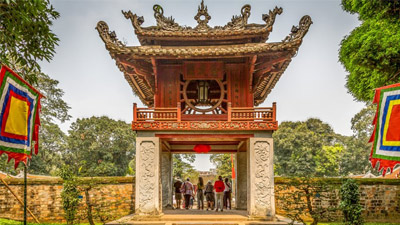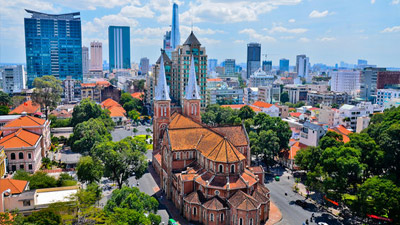Vietnam's economy since reform in 1986
 In December 1986, the 6th congress of the Communist Party of Vietnam was taken place. At the congress, delegates reached consensus on a reforming program. Since 1986, Doi Moi (Reform) has been launched in economy, politics and society. Beside state and collective sectors in economy, private and foreign sectors are recognized.
In December 1986, the 6th congress of the Communist Party of Vietnam was taken place. At the congress, delegates reached consensus on a reforming program. Since 1986, Doi Moi (Reform) has been launched in economy, politics and society. Beside state and collective sectors in economy, private and foreign sectors are recognized.
However, of course, state sector plays dominant role in the economy. In Doi Moi, Vietnamese government has implemented a transition from planned economy to market economy under the control of government. Vietnamese government also issued many policies to open domestic market, expend and enhance commercial relationship with other countries as well as promote foreign investment.
Structure of Vietnam’s economy involves three main sectors: (I) agriculture, forestry and aquaculture; (II) industry and construction; (III) service. According to research of the General Statistic Office of Vietnam, by 2010, industry and construction sector is accounted for 41.10% of GDP while service sector contributed 38.32%. Vietnam is on the shift of economy’s structure from an economy with dominant role of agriculture to an economy with central role of industry and construction sector. In other words, it’s the process of industrializing and modernizing national economy in particular and the whole country in general.
Vietnam’s 2011 Gross Domestic Product – GDP was estimated about US$ 135.411 billion and the rate of GDP per person reached US$ 1,300. For a period of more than 20 years after Doi Moi, Vietnam has always maintained a positive economic growth rate around 6% - 7% even in 1997 and 2008 financial crisis. The figures of inflation, trade balance, etc. are under control. Trade relationships between Vietnam and foreign countries are continuously enhanced. By mid-2007, Vietnam has set up economic relationships with 224 nations and territories in the world; joined more than 350 agreements of bilateral cooperation and developmentas well as 87 trade agreements. Vietnam is also active members of international and multilateraleconomic organizations such as APEC, ASEAN, etc. On 1st November 2011, Vietnam was officially recognized as 150th members of the World Trade Organization – WTO. By 2010, the number of FDI projects is 12,463 and total amount of FDI capital is US$ 194,572.2 million.

Vietnam's economy in the war
During the period of 1945-1975, Vietnam was divided into two regions with two different governments. In the North, the authority government was the Democratic Republic of Vietnam and the direction of...

Vietnam's economy after the war (1975-1986)
After the war, the Northern and Southern Vietnam were unified as one state: the Socialist Republic of Vietnam. In 1978, Vietnamese government issued new currency of Vietnam Dong (VND), unified...
Vietnam Travel Guide
- Vietnam Overview
- Vietnam Geography
- Vietnam History
- Vietnam Ecology And Environment
- Vietnam Government And Politics
- Vietnam Economy
- Vietnam Demographics
- Vietnam Customs
- Vietnam Art Performance
- Vietnam Religions
- Vietnam Festivals
- Vietnam Gastronomy
- Get To Vietnam
- Vietnam Travel Tips
- Vietnam Travel Articles & News

 BEST TOURS
BEST TOURS



